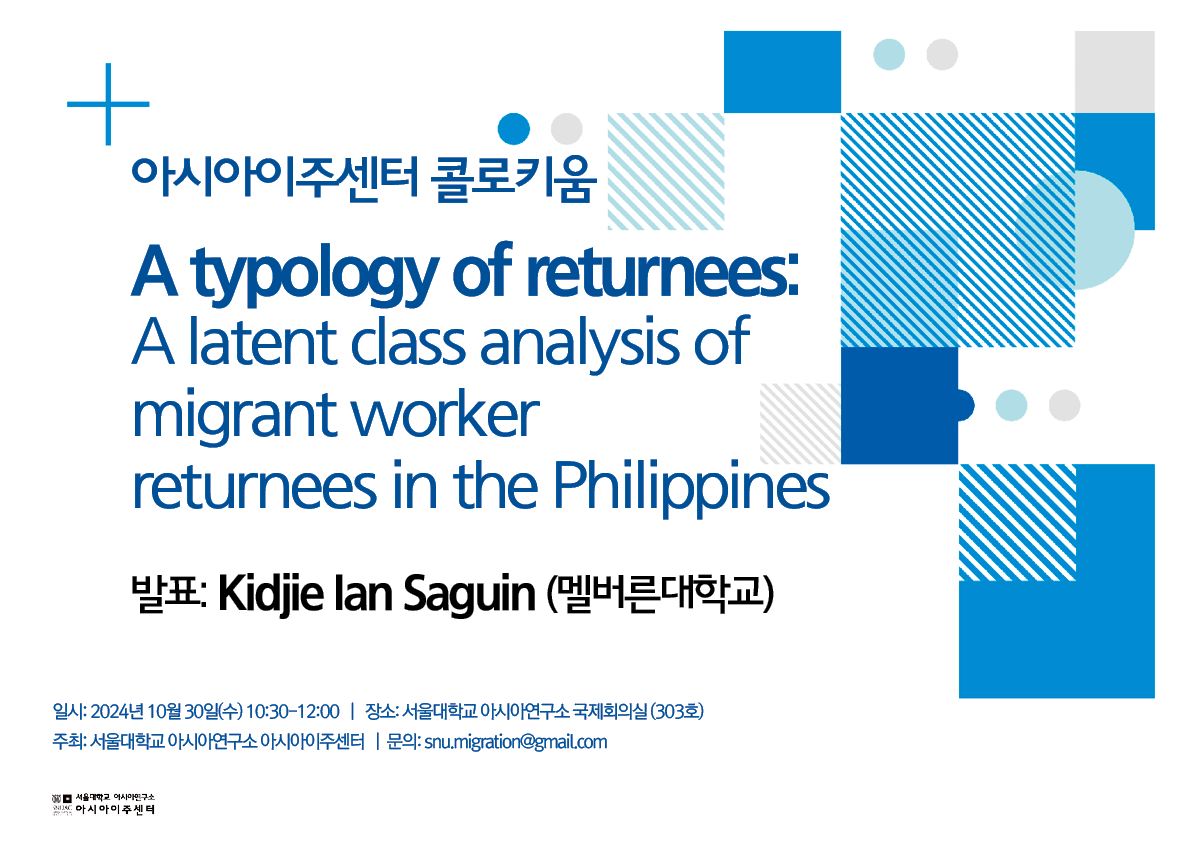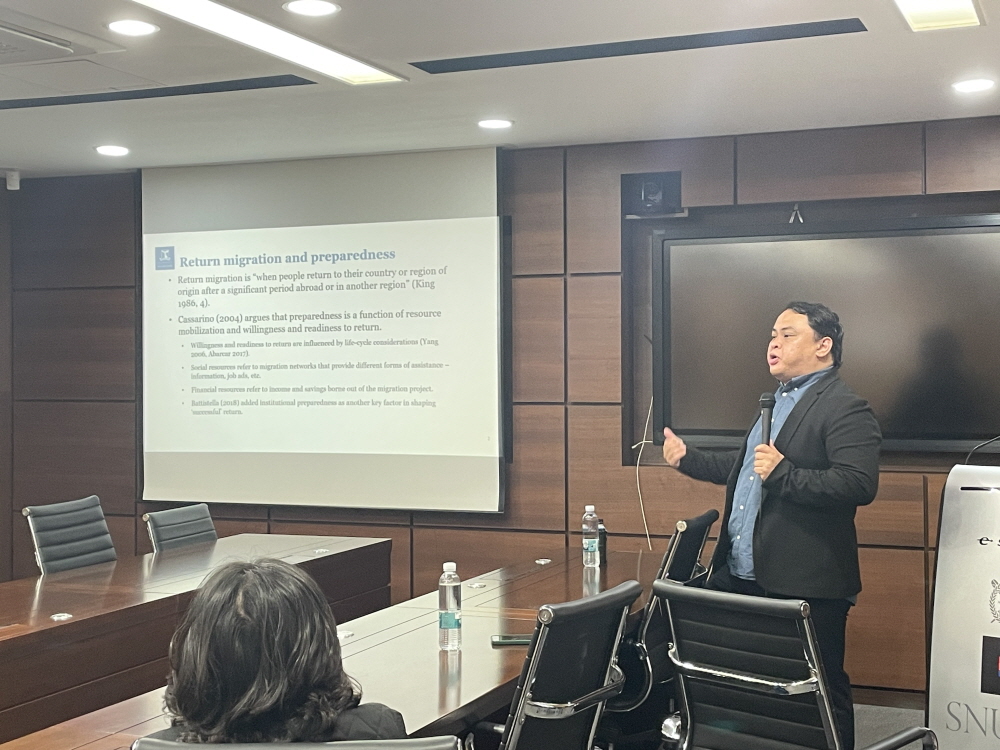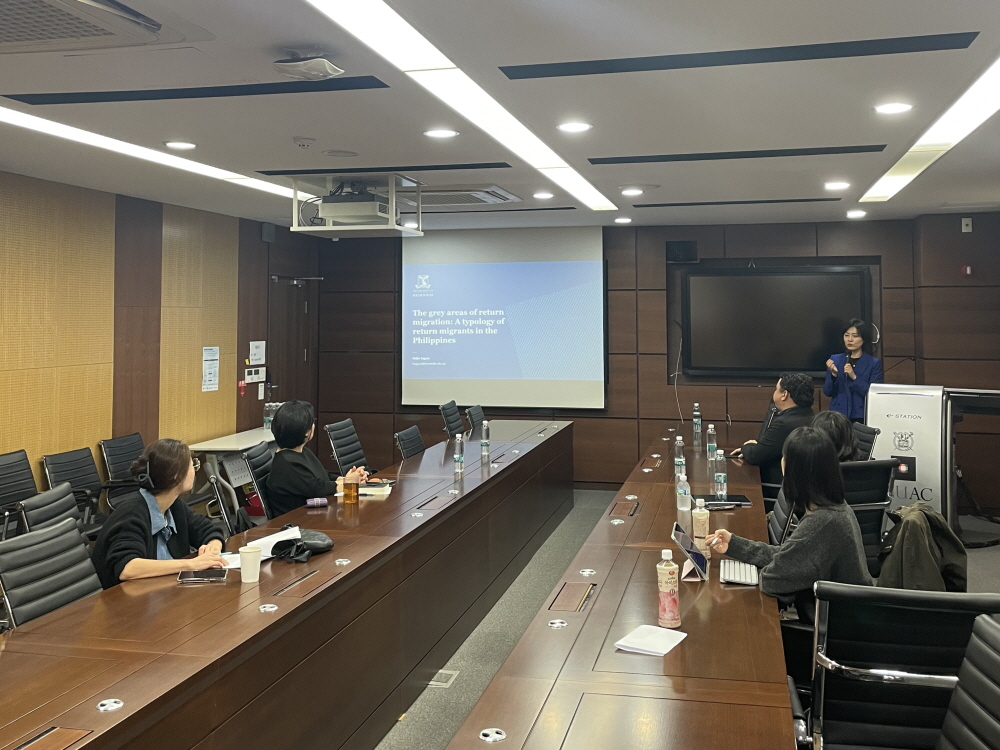
Return is an integral part of the international migration regime of the Philippines, but it is the phase in the ‘migration cycle’ that is least understood. Given that much of international migration is characterized by temporary labour migration, a certain class of balik manggagawa (migrant worker returnee) emerged as a means to capture the vacationing labour migrants or those engaged in return visits. However, little systematic information exists to document the scale, composition, trajectories, and outcomes of these returns (and return visits). As a result, there is a disjuncture between the return needs of the broader set of overseas Filipino workers with the reintegration policies meant to help them (Saguin 2019). This paper seeks to address this gap by conducting a latent class analysis of over 2,500 returnees, defined here as an overseas Filipino worker prior to the last 12 months who were in the country at the time of survey either for vacation or permanent residence.. Our research is motivated by the following question: Who are the returnees? How do returnees vary in terms of their preparedness and willingness to return? Our concern is motivated by the idea that successful return has been argued to be driven by individual preparedness (Cassarino 2004), which can be divided into social, financial (savings, assets, etc.) and programmatic preparedness (access to government programs). The paper not only captures the under-researched aspects of return migration in the Philippines but also serves to appraise the relevance and responsiveness of reintegration and social protection programs of the Philippines.
Photos
Review
10월 30일 오전 10시 30분부터 “A typology of returnees: A latent class analysis of migrant worker returnees in the Philippines”라는 주제로 멜버른 대학교의 Kidjie Ian Saguin을 초청해 콜로키움을 개최했다. Kidjie Ian Saguin는 멜버른 대학교 사회 및 정치 과학부에서 공공 정책(경영) 강사로 재직 중이며, 노동 파견국이 해외 이주 노동자에게 사회 서비스 제공을 확대하는 방법과 귀국자에게 서비스를 제공하는 방법을 조사하는 연구를 진행하고 있다.
본 콜로키움에서는 필리핀의 국제 이주 체제에서 필수적인 부분이지만 그동안 연구에서 잘 다루어지지 않은 귀국에 대하여 살펴보았다. 먼저 필리핀의 귀국 이주민들은 각기 다른 준비 상태와 귀국 의지를 지녔음에도 불구하고, 지금까지 귀국의 규모, 구성, 경로 및 결과를 문서화할 수 있는 체계적인 정보는 거의 없다는 점을 지적했다. 이에 국제 이주 조사 데이터를 활용해 귀환 이주민을 분석하고, 귀국의 유형을 4가지로 나누어 특징을 소개하였다.
발표자에 따르면 필리핀 귀국 이주민은 사회적‧재정적 재통합에 어려움을 겪고 있으며 재이주할 의향이 없는 그룹, 사회적 자원과 함께 제도적으로 준비된 그룹, 사회적으로 단절되었지만 재정적으로 준비되어 재이주할 가능성이 높은 그룹, 사회적 자원과 제도적 지원은 가장 많으나 재통합에 어려움을 겪는 그룹으로 나눌 수 있다. 그러나 필리핀 정부가 지원하는 재통합 및 사회 보호 프로그램은 이렇듯 다양한 유형의 귀환 이주민을 고려하지 않았기에 인지도와 이용률 모두 저조하다는 것을 밝히며, 귀환 이주민의 사회적‧재정적 여건을 고려한 맞춤형 지원 정책의 필요성을 강조하였다.






